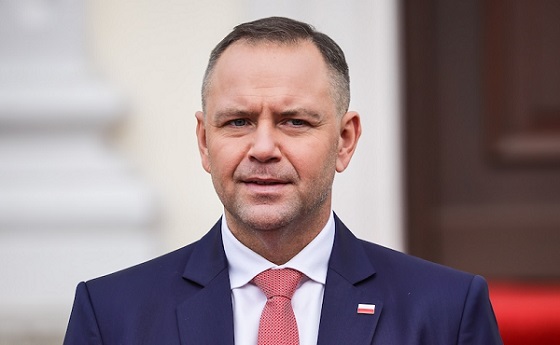conflict
Once Again, Biden Doesn’t Have A Strategy For Ukraine. Where’s The Money Going?

 From the Daily Caller News Foundation
From the Daily Caller News Foundation
The administration that claims to be “saving the soul of Democracy” has once again blown off the legislative branch of government.
When the law to give Ukraine another $61 billion made its way through Congress back in April, lawmakers appropriated the money with strings attached. One big string was section 504 of the bill, which stipulated that within 45 days, the administration had to present a strategy for the war. That strategy was due on June 4 — the Biden administration’s homework is now two months late.
You would be forgiven for thinking we formed a strategy before sending $175+ billion in American tax dollars to the plains of Eastern Europe. Two years into a war that has claimed a million lives, Congress asked for a plan that lays out “specific and achievable objectives” and prioritizes “United States national security interests.” Congress also reasonably requested a best guess on how our actions in Ukraine will be met by Russia, China, North Korea and Iran.
When the plan finally does arrive on lawmakers’ desks, expect a thousand pages of government pablum. Gone are the days when U.S. leaders clearly and concisely articulated reasons to go to war and our representatives voted on whether or not to commit the nation to conflict.
The United States hasn’t declared war since 1942. Every American knew the Roosevelt administration’s plans for the war on its first day — the president told Congress on December 8, 1941, that the U.S. would “win through to absolute victory” and make sure “this form of treachery shall never again endanger us.” Hard to believe now, but Roosevelt’s demanding “absolute victory” was controversial in that it meant the United States would need to conquer, not just defeat, the Empire of Japan and Third Reich.
Today, our leaders have stopped asking for the approval of the American people when it comes to conflict — ever since we rebranded the War Department, the Department of Defense has been much more war-like.
The war in Ukraine is the latest example. The American people have not been fully briefed on the risks of that far-away battle or the point of U.S. involvement. Our lame-duck president, when he addresses Ukraine at all, calls Russian President Vladimir Putin a “war criminal” and claims “we know Putin won’t stop at Ukraine.” That is the total depth of his argument, which he expects the American people to swallow without debate.
But the president’s invective does not make for sound strategy.
First, the risks. America is engaged in a proxy war with Russia, as evidenced by the Russian peoples’ belief that they are at war with the United States and the west. NATO’s expansion towards Moscow is a major red line for Russia. It is also a broken promise, as the United States pledged not to move NATO’s borders “one inch eastward” towards Moscow. After it moved 1,000 miles eastward, Vladimir Putin drew the line in 2007, saying NATO expansion “represents a serious provocation that reduces the level of mutual trust. And we have the right to ask: against whom is this expansion intended?”
The concern is one that has haunted Russian leaders for centuries. The Poles invaded Russia in 1605, the Swedes in 1707, the French in 1812, and the Germans in 1914 and 1941. In World War II alone, the Soviets lost 24 million people — an incomprehensible figure, dwarfing the 418,000 American casualties.
Regardless of what one thinks of Russia’s system of government or Vladimir Putin, it is a fact that in the past 500 years, Russia has often found itself the target of Western aggression. Perhaps when Putin threatens nuclear war over Ukraine, it is worth taking seriously.
Another risk is to our own vital stocks of armaments. Ukraine is blowing through American missiles and projectiles as an unsustainable rate. Consider that, according to the Congressional Research Service, we’ve given the Ukrainians “10,000+” Javelins and “2,000+” Stingers. That “+” is the classified fig leaf over the exact number, but it is safe to assume we are running low on these arms for our own defense. Until 2022, the United States had not purchased a Stinger since 2003 and the missile line was closed entirely in 2020. Even under the rosiest of scenarios, it is unlikely we will be able to replenish the Stingers we have given to Ukraine until 2028.
Lastly, the huge expenditure of taxpayer dollars going to Ukraine has totaled enough to double the U.S. Navy’s fleet. Worse, it is borrowed. The $175 billion is money we do not have, and that sum does not include interest on the debt.
Given the risks and money on the line, Congress should demand the Biden administration comply with the law. The American people deserve a full accounting.
Morgan Murphy is a former DoD press secretary, national security adviser in the U.S. Senate, a veteran of Afghanistan.
The views and opinions expressed in this commentary are those of the author and do not reflect the official position of the Daily Caller News Foundation.
Featured Image Credit: Official White House Photo by Adam Schultz
Artificial Intelligence
AI Drone ‘Swarms’ Unleashed On Ukraine Battlefields, Marking New Era Of Warfare


From the Daily Caller News Foundation
Artificial intelligence-powered drones are making their first appearances on the battlefield in the Russia-Ukraine war as warfare creeps closer to full automation.
In bombardments on Russian targets in the past year, Ukrainian drones acting in concert were able to independently determine where to strike without human input.
It’s the first battlefield use of AI “swarm” technology in a real-world environment, a senior Ukrainian official and Swarmer, the company who makes the software, told the Wall Street Journal in a Tuesday report. While drones have increasingly defined modern battlefields, swarms until now had been confined to testing rather than combat.
“You set the target and the drones do the rest,” Swarmer Chief Executive Serhii Kupriienko told the WSJ. “They work together, they adapt.”
So far, the Swarmer technology has been used hundreds of times to target Russia assets, but was first used a year ago to lay mines on the front, the Ukrainian official told the WSJ. The software has been tested with up to 25 drones at once, but is usually utilized with only three.
Kupriienko told the WSJ that he was preparing to test up to 100 drones at once with the linking software.
A common arrangement used on the battlefield includes one reconnaissance drone to scout out the target and two explosive drones delivering the payload on target, the official told the WSJ.
While Western nations such as the U.S., France and the United Kingdom are also pursuing drone swarm technology, they have not deployed swarm technology on the battlefield the way Ukraine has, according to the WSJ. Currently, autonomous weapons are not regulated by any international authority or binding agreement, but ethical concerns around the technology has led many to call for increased regulation of weapons like the Swarmer system.
The Ukrainian Ministry of Foreign Affairs did not immediately respond to the Daily Caller News Foundation’s request for comment.
conflict
Trump Pentagon Reportedly Blocking Ukraine From Firing Western Missiles Deep Into Russia


From the Daily Caller News Foundation
The Department of Defense has spent months blocking the Ukrainian military from using American and British-made missiles to hit targets deep inside Russia, The Wall Street Journal reported Sunday, citing unnamed U.S. officials.
Undersecretary of Defense for Policy Eldridge Colby reportedly designed the procedure to review requests to carry out the long-range strikes with weapons that are either of U.S. origin or that require American intelligence or use components provided by the U.S., according to the WSJ. Secretary of Defense Pete Hegseth reportedly has the final say on whether Ukrainian forces can use the MGM-140 ATACMS (Army Tactical Missile System) to hit targets in Russia.
The reported blocks on missile strikes coincides with a Trump administration effort to broker a peace deal between Russia and Ukraine. A Pentagon spokesperson declined to comment further on the matter.
BREAKING: President Vladimir Putin reacts to B-2 Flyover pic.twitter.com/1mzVn7DxlW
— Jack Poso 🇺🇸 (@JackPosobiec) August 15, 2025
The Biden administration allowed Ukraine to carry out strikes with ATACMS in November, weeks after President Donald Trump won the 2024 election, the New York Times reported. Trump criticized the move during a December interview with Time magazine.
“It’s crazy what’s taking place. It’s crazy,” Trump said. “I disagree very vehemently with sending missiles hundreds of miles into Russia. Why are we doing that? We’re just escalating this war and making it worse. That should not have been allowed to be done.”
Trump and Russian President Vladimir Putin met in Alaska on Aug. 15 for a summit meeting during which Trump sought to secure a cease-fire in Russia’s war with Ukraine. As Trump greeted Putin, a B-2A Spirit stealth bomber and several fighters carried out a flyover of Elmendorf Air Force Base.
Trump met with Ukrainian President Volodymyr Zelensky and major European leaders on Aug. 18 to update them on the summit.
In July, Trump reached an agreement with NATO where members of the alliance would purchase weapons, including MIM-104 Patriot surface-to-air missiles, and donate them to Ukraine.
-

 Business8 hours ago
Business8 hours agoQuebecers want feds to focus on illegal gun smuggling not gun confiscation
-

 Uncategorized1 day ago
Uncategorized1 day agoNew report warns WHO health rules erode Canada’s democracy and Charter rights
-

 Business8 hours ago
Business8 hours agoEmission regulations harm Canadians in exchange for no environmental benefit
-

 Energy1 day ago
Energy1 day agoMinus Forty and the Myth of Easy Energy
-

 Crime1 day ago
Crime1 day agoFrance stunned after thieves loot Louvre of Napoleon’s crown jewels
-

 Courageous Discourse6 hours ago
Courageous Discourse6 hours agoNo Exit Wound – EITHER there was a very public “miracle” OR Charlie Kirk’s murder is not as it appears
-

 Frontier Centre for Public Policy2 days ago
Frontier Centre for Public Policy2 days agoOttawa Should Think Twice Before Taxing Churches
-

 Alberta2 days ago
Alberta2 days agoBusting five myths about the Alberta oil sands






